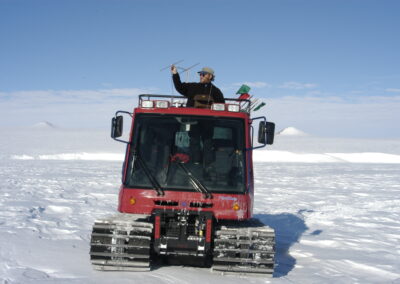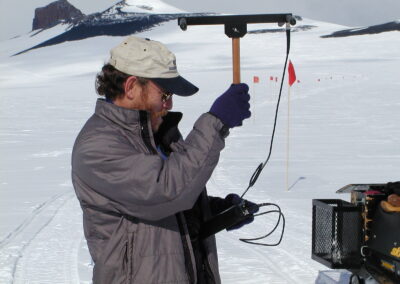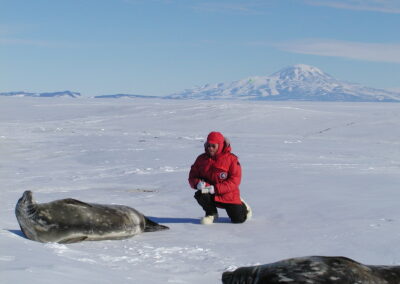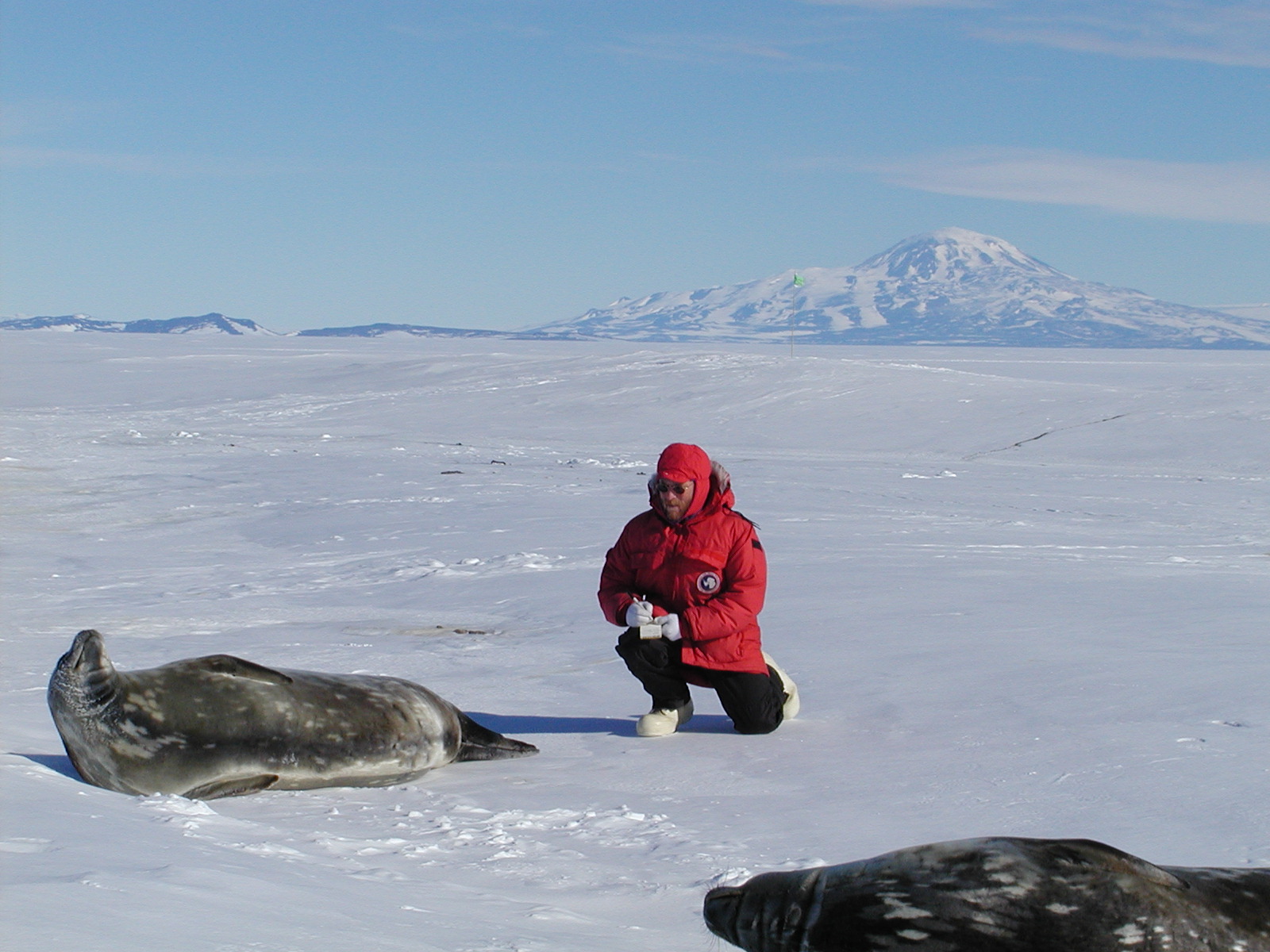
Weddell Seal Surveys and Research

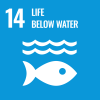 HSWRI has periodically studied Weddell seals in the Antarctic since the 1970s, focusing on population surveys, radio tracking, and bioacoustic studies of Weddell seal vocalizations. Researchers recorded both underwater and surface vocalizations of Weddell seals to investigate geographic and individual variations in seal calls. HSWRI researchers returned to Antartica in the 1990s to study Weddell seal pups dispersal during their first year.
HSWRI has periodically studied Weddell seals in the Antarctic since the 1970s, focusing on population surveys, radio tracking, and bioacoustic studies of Weddell seal vocalizations. Researchers recorded both underwater and surface vocalizations of Weddell seals to investigate geographic and individual variations in seal calls. HSWRI researchers returned to Antartica in the 1990s to study Weddell seal pups dispersal during their first year.
In 1999 to 2000, the U.S. Antarctic Program supported more than 800 researchers and other participants in cooperation with other Antarctic Treaty nations. These projects, funded by the National Science Foundation, were part of the international effort to understand the Antarctic and its role in global processes. HSWRI researchers participated in a 52-day Antarctic Pack Ice Seal research cruise with 29 other scientists to study how changes in the environment cause fluctuations in the abundance, growth patterns, life histories, and behavior of Antarctic animals. HSWRI staff focused on the four species of Antarctic pack ice seals (crabeater, leopard, Weddell, and Ross seals), which are at least half of world’s seals. HSWRI researchers were part of the team that attached satellite-link transmitters to the seals, participated in helicopter aerial surveys, made body measurements, and took biomedical samples. HSWRI researchers subsequently assessed the health of the animals based on these samples. This was the first time that samples of all four Antarctic seals were taking at the same time in the same location which allowed measurements between and among the species. HSWRI evaluated both the general health and disease exposures for the seals, creating a baseline assessment for future comparisons. As long-lived, top level predators, pack ice seals are scientifically interesting because they can assist in monitoring shifts in ecosystem structure and function, especially changes that occur in sensitive polar areas in response to global climate changes.
Selected Publications:
Blight, L. K., D. G. Ainley, S. F. Ackley, G. Ballard, T. Ballerini, R. L.Brownell, Jr., C. –H. C. Cheng, M. Chiantore, D. Costa, M. C. Couler, P. Dayton, A. L. Devries, R. Dunbar, S. Earle, J. T. Eastman, s. D. Emslie, C. W. Evans, R. A. Garrott, S. Kim, G. Kooyman, A. lescroel, M. Lizotte, M. massaro, S. Olmastroni, P. J. Ponganis, J. Russell, D. B. Siniff, W. O. Smith, Jr., B. S. Stewart, I. Stirling, J. Willis, P. Wilson, E. J. Woehler. 2011. Fishing for data in the Ross Sea. Science 220:1316.
Bohne, B.A., J.A. Thomas, E.R. Yohe and S.H. Stone. 1985. Examination of potential hearing damage in Weddell seals (Leptonychotes weddelli) in McMurdo Sound, Antarctica. Antarctic Journal of the United States 19:174-176.
Castellini, M.A., S.J. Trumble, T.L. Mau, P.K. Yochem, B.S. Stewart and M.A. Koski. 2009. Body and blubber relationships in Antarctic pack-ice seals: Implications for the control of blubber depth. Physiological and Biochemical Zoology 82: 113-120.
Curtis, C., B.S. Stewart and S.A. Karl. 2009. Pleistocene population expansion of Antarctic seals. Molecular Ecology 18:2112-2121.
Curtis, C., B. S. Stewart, S. A. Karl. 2011. Genetically effective population sizes of Antarctic seals estimated from maternally, paternally, and biparentally inherited genes. Conservation Genetics 12:1435-1446.
Stewart, B. S., Yochem, T.S. Gelatt, and D.B. Siniff. First-year movements of Weddell seal pups in the western Ross Sea, Antarctica. Antarctic Ecosystems: Models for Wider Ecological Understanding. Pp. 71-76. 2000.
Stewart, B.S., P.K. Yochem, T.S. Gelatt, and D.B. Siniff. The pack ice niche of Weddell seals in the Ross Sea. Antarctic biology in a global context. Pp.224-228. 2003.
Stewart, B.S., P.K. Yochem, T.S. Gelatt, D.B. Siniff. Dispersal and habitat use of Weddell seals (Leptonychotes weddellii) in the Ross Sea, Antarctica, during their first year of life. New Zealand Natural Sciences. 23-195. 1998.
Thomas, J.A., R. A. Puddicombe, M. George and D. Lewis. 1988. Variations in underwater vocalizations of Weddell seals (Leptonychotes weddelli) at the Vestfold Hills as a measure of breeding population discreteness. Hydrobiologia 165:279-284.
Thomas, J.A., L.M. Ferm and V.B. Kuechle. 1987. Silence as an anti-predation strategy by Weddell seals. Antarctic Journal of the United States XXII:232-234.

